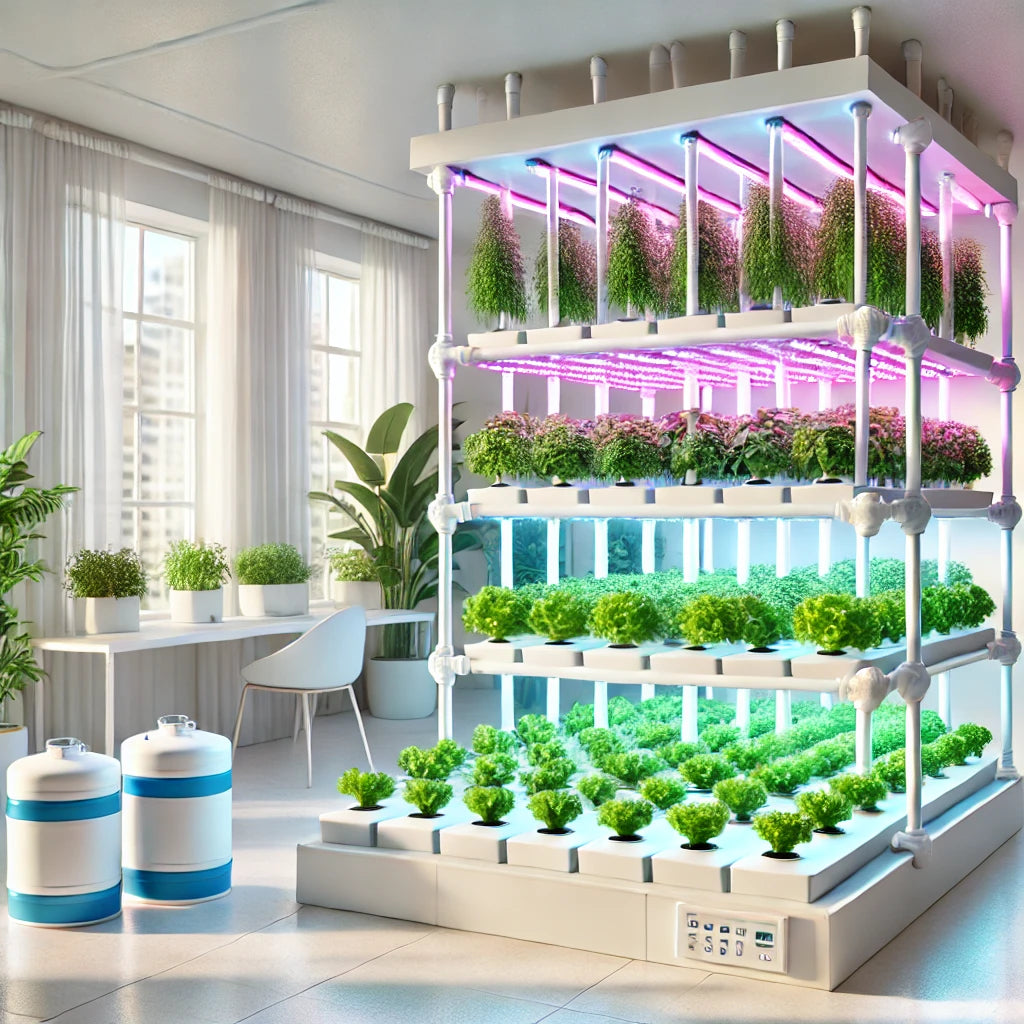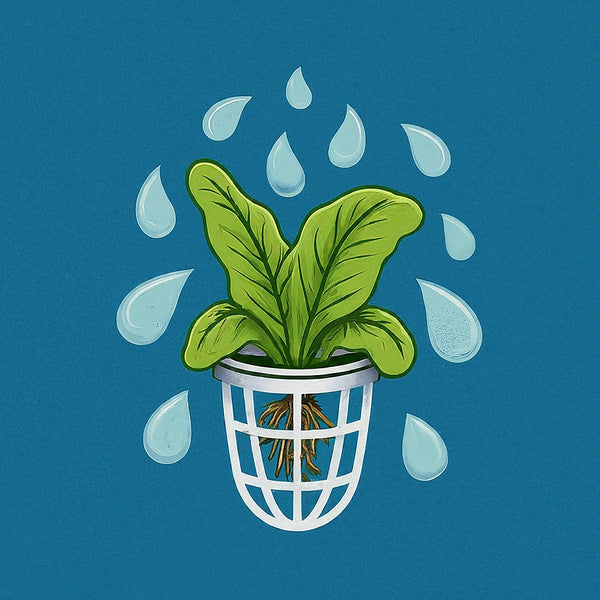
How to Start Hydroponics at Home: A Beginner’s Guide
Share
Hydroponics offers an innovative way to grow plants without soil, using nutrient-rich water instead. It’s an efficient, sustainable solution for cultivating fresh produce indoors or in limited spaces. Follow these steps to get started on your hydroponic journey.
1. Select a Suitable Space
Find a location with adequate lighting and ventilation. This could be a sunny windowsill, a basement with controlled lighting, or even a small outdoor area. For spaces with little natural light, consider installing grow lights to mimic sunlight.
2. Choose Your Hydroponic System
The right system depends on your needs and expertise. Beginners can start with simple setups like the Deep Water Culture (DWC) system, while those seeking advanced options can explore Nutrient Film Technique (NFT) or drip systems.
3. Pick the Plants You Want to Grow
Start with plants that adapt well to hydroponics, such as leafy greens (lettuce, kale) or herbs (basil, mint). These are easy to grow and maintain. Once you’re comfortable, experiment with fruiting plants like tomatoes or cucumbers.
4. Prepare the Growing Medium
Instead of soil, use a growing medium like coconut coir, rockwool, or clay pebbles. These materials provide support and allow roots to absorb nutrients and oxygen effectively.
5. Set Up Your Water Reservoir
Your reservoir stores the nutrient solution that nourishes your plants. Keep it clean, and ensure its size suits your system. Use a pump if required to circulate oxygen-rich water through the system.

6. Mix and Balance the Nutrient Solution
Purchase hydroponic nutrients suited to the plants you’re growing. Mix them with water as instructed, and test the solution’s pH. The ideal range is between 5.5 and 6.5. Adjust the pH as needed using specialized solutions.
7. Plant Your Seeds or Seedlings
Start seeds in a germination tray, then transfer the seedlings to the system once they sprout. Ensure their roots are positioned to access the nutrient solution.
8. Set Up Lighting
If using artificial lights, position them to provide consistent illumination. Plants typically require 12–16 hours of light daily. LED grow lights are energy-efficient and simulate natural sunlight effectively.
9. Monitor the System Regularly
Maintenance is key to a successful hydroponic setup. Check water levels, pH, and nutrient concentrations weekly. Keep an eye out for signs of disease or pests, and clean your system periodically to prevent algae or bacterial growth.
10. Harvest Your Plants
Once your plants reach maturity, harvest them gently. With hydroponics, you’ll enjoy faster growth cycles and can replant immediately for continuous production.

Final Thoughts
Hydroponics is a rewarding way to grow fresh, healthy plants year-round. By following these steps and maintaining your system, you’ll create a sustainable garden that thrives without soil. Whether you’re a beginner or a seasoned gardener, hydroponics offers endless possibilities to explore.
Ready to start? Equip yourself with the right tools and take the first step toward a greener, more productive future.
